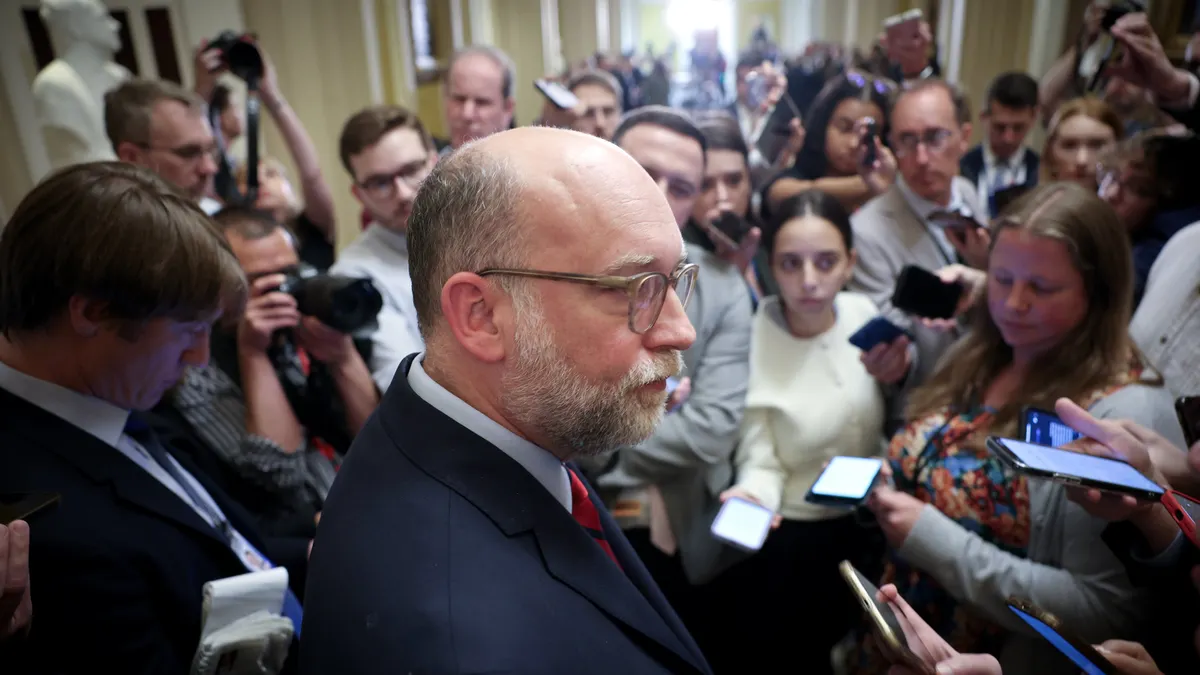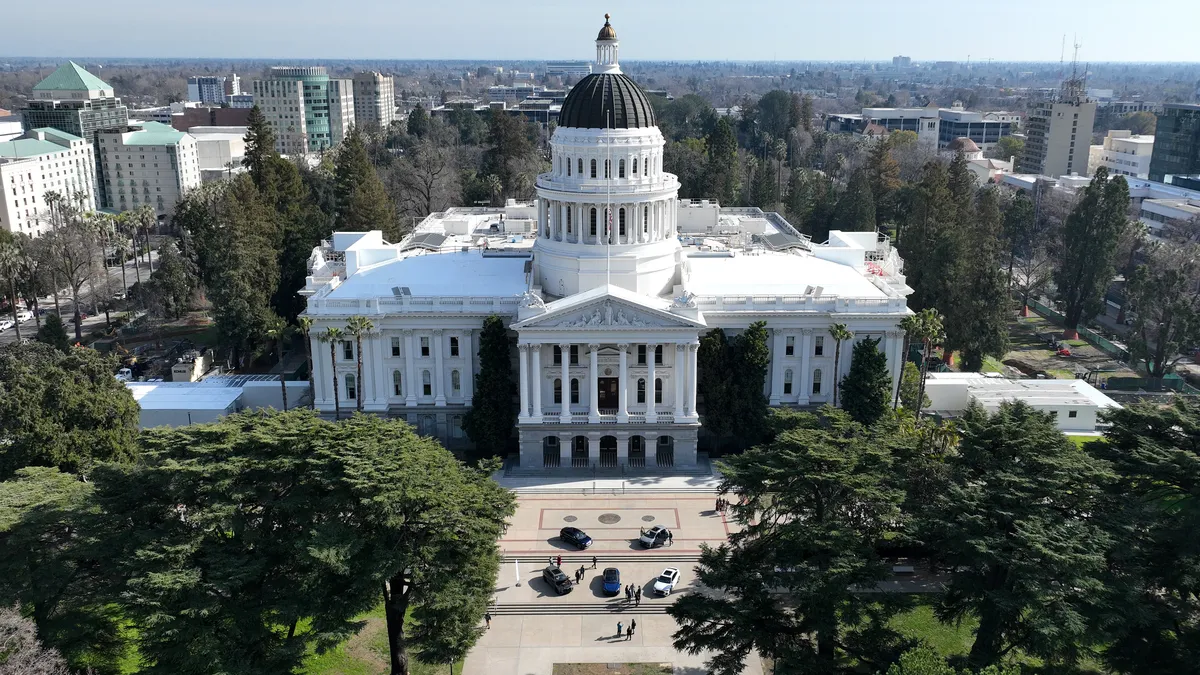Wage and hour was a relatively sleepy area of employment law not all that long ago. But then came the Obama administration, which brought an influx of employee-friendly legislation, regulation and enforcement. And then, it stopped.
We've gone from arguable overregulation to arguable underregulation at a break-neck pace. But that doesn't mean the space has quieted down completely. From issues created by the gig economy to litigation at the U.S. Supreme Court, there's been plenty of issues to keep HR professionals and their lawyers busy. But one shift in particular — the influx of state and local laws — has been the most pressing challenge, experts tell HR Dive.
State and local laws
While the feds have been focused on rolling back Obama-era initiatives, state and local governments have more than picked up the slack and, for employers, there’s no reprieve in sight, according to Jeremy Glenn, member of Cozen O’Connor.
“I think employers still have good reason to be optimistic that … the federal agencies are going to continue to emphasize compliance over litigation, but there’s no indication that the cities and the states share the same willingness to back down from their enforcement priorities,” he said. Especially in states with democrats in leadership, it’s even more likely the moves are a direct reaction to a perceived lessening of enforcement from the federal government, Glenn said.
It’s a nightmare.

Loren Gesinsky
Partner, Seyfarth Shaw LLP
Loren Gesinsky, a partner in the New York office of Seyfarth Shaw LLP, agreed. “There is definitely a trend at local and state levels that’s really rampant around the country,” he said, and “it’s absolutely a direct reaction to them feeling that the federal law and federal enforcement was not doing enough.” New York’s overtime threshold, for example, was likely thanks to the injunction that halted the rules that would have increased the federal threshold. “If that new level had gone into effect would we have seen this out of New York? Probably not.”
And while the push to increase minimum wage rates has certainly dominated headlines in those regions, there are myriad other laws cropping up: predictable scheduling, salary history and, as Gesinsky mentioned, overtime thresholds. Add in different requirements for those laws at the state and local levels and employers have their work cut out for them. “It’s a nightmare,” Gesinsky said.
Businesses have been pushing back in a number of ways, including litigation. Philadelphia’s salary history ban, for example, is on hold while a court reviews a challenge to the law. There are a few legislative fixes that could lessen the burden, too, Gesinky noted, but so far nothing has caught on in the wage and hour space, as it has with paid leave.
Litigation
Litigation and resulting case law continue to reshape the wage and hour landscape, too. There has been an uptick in the volume of wage and hour cases employers are seeing, particularly in California, according to William J. Carroll, a partner in Schiff Hardin's San Francisco office. That trend has leveled off to some extent, but don’t anticipate any dramatic decrease in the near future, he said.
There are a number of factors that likely contributed to the increase, including the fact that workers became more aware of the details of the FLSA's exemptions during the roller-coaster ride that was the birth and unexpected death of the overtime rule. Employees and their attorneys also are getting better at class claims in the space, Carroll said. “As wage and hour litigation matures, the claims become more refined, more sophisticated.”
We certainly are not seeing any retrenchment away from using contractors. That phenomenon is not abating at all.

William J. Carroll
Partner, Schiff Hardin
California, in particular, is dealing with some interesting questions, thanks to its labor code and case law. There’s a wave of compensable working time suits centered around bag checks, as well as a lot of challenges to independent contractor status thanks to the rise of the gig economy. “The Uber litigation is a very dominant feature of the landscape out here,” Carroll said. Still, it’s full impact remains to be seen, as employers aren't waiting for the results of the test cases.
“We certainly are not seeing any retrenchment away from using contractors,” he said. “That phenomenon is not abating at all.” So what does that mean? "We anticipate that independent contractor misclassification claims are going to be a persistent feature of the litigation landscape here on the west coast."
As for the country as a whole, all eyes are on the U.S. Supreme Court; it will soon issue a ruling in a trio of cases challenging employer arbitration agreements that require workers to waive their right to pursue claims collectively.
“If they strike down the class waiver, I think you will see a rise in class litigation,” Glenn said. He noted, however, that such an outcome seems unlikely. “My sense is the Supreme Court has been anti-class action and they have been pro-arbitration and with the most recent appointee they became a little bit more so,” he said. “So my sense is the court will allow class action waivers to continue.”
Federal (in)action
Meanwhile, wage and hour action from the federal government has focused on deregulation and a return to pre-Obama-era initiatives.
To start, there’s the U.S. Department of Labor’s (DOL) new, more employer-friendly unpaid intern test, which Gesinsky said wasn’t a surprise. Following a wave of unpaid intern litigation that hit New York particularly hard, the agency opted to fall in line with the courts’ rulings. Gesiensky warns against jumping head first into unpaid intern hiring for the summer, however. This test doesn’t mean there are no unlawfully unpaid interns, he said; DOL still maintains several factors that employers must meet and there's now a whole body of case law out there — "and running contrary to that is still very risky."
Then there’s the proposed rescission of the tip pooling regulations, the rescission of the Administrator’s Interpretations on joint employment and independent contractors, and a return to opinion letters. Still, it's not all reversals. DOL seems to be moving forward with a new, somewhat lower, overtime threshold. The agency says it will have a proposal ready in October.
It will take some time for the new landscape to fully come into view, but one thing’s for sure: “Things are changing at a very rapid level right now," Gesinsky said. “We’re living in interesting times.”



















